Published on
- 2 min read
Ways to create arrays in C#
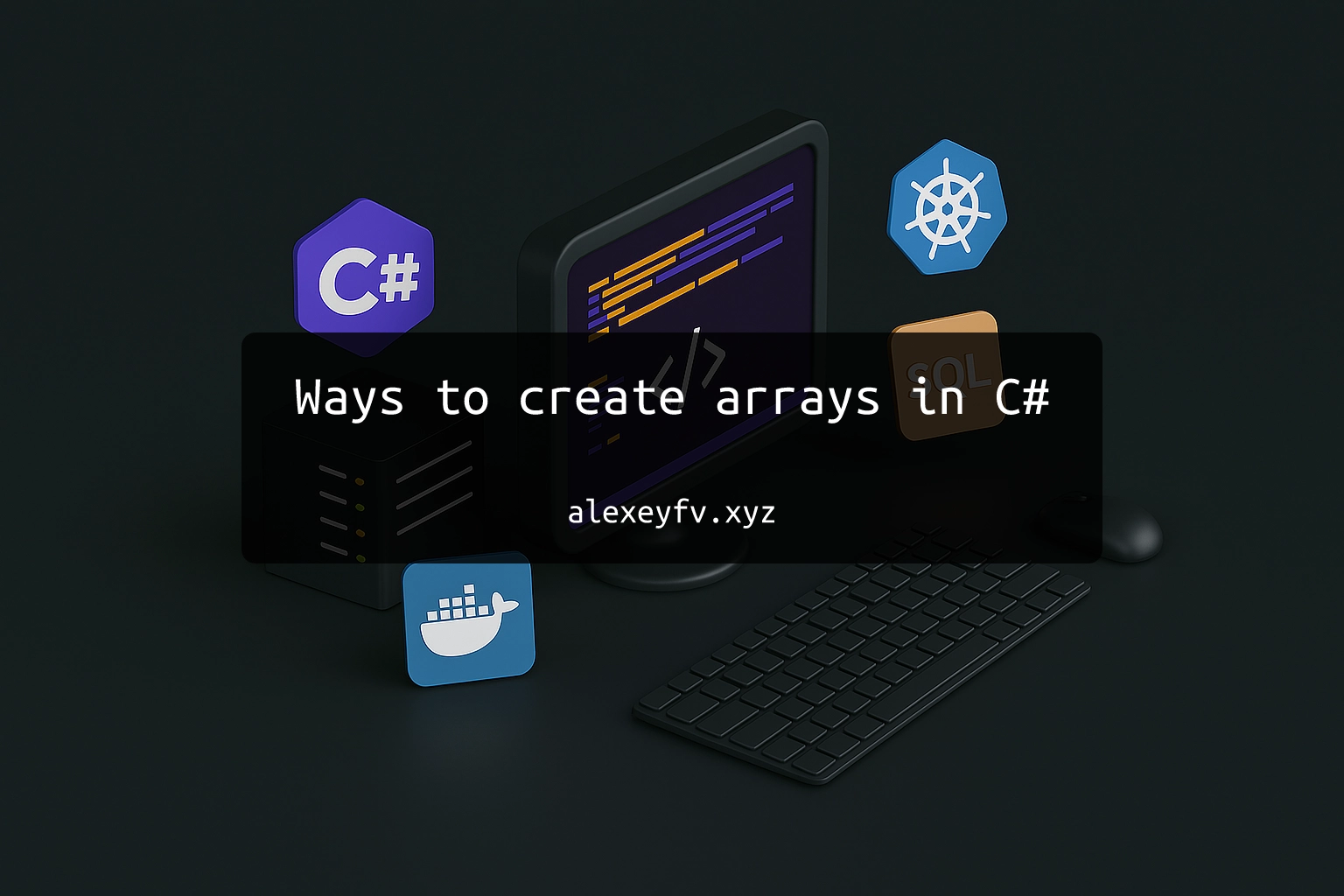
How do you create an array in C#? It seems like a simple question. But with each new version of .NET, new features appear. Right now, I know 7 different ways to create arrays.
new T[]
The most obvious, simple, and popular way to create arrays (and objects in general). This operator is used everywhere and is the default option in most scenarios.
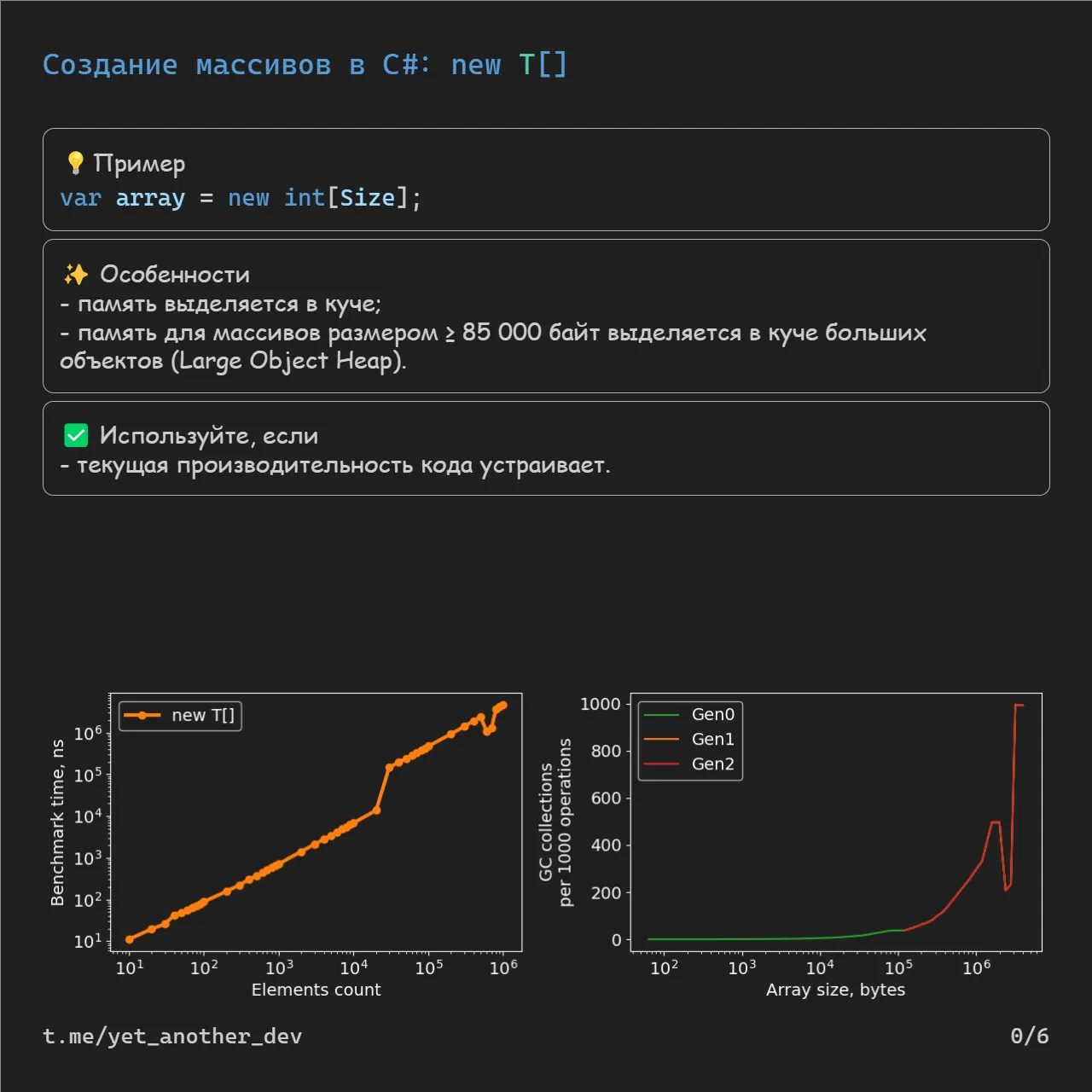
Baseline performance of new T[] array creation
stackalloc T[]
Allocates memory on the stack for an array of a fixed size and returns a pointer. In the past, stackalloc required an unsafe context, but with Span<T>, it can now be used safely. This method is limited by the stack’s memory size and may cause a StackOverflowException if used carelessly.
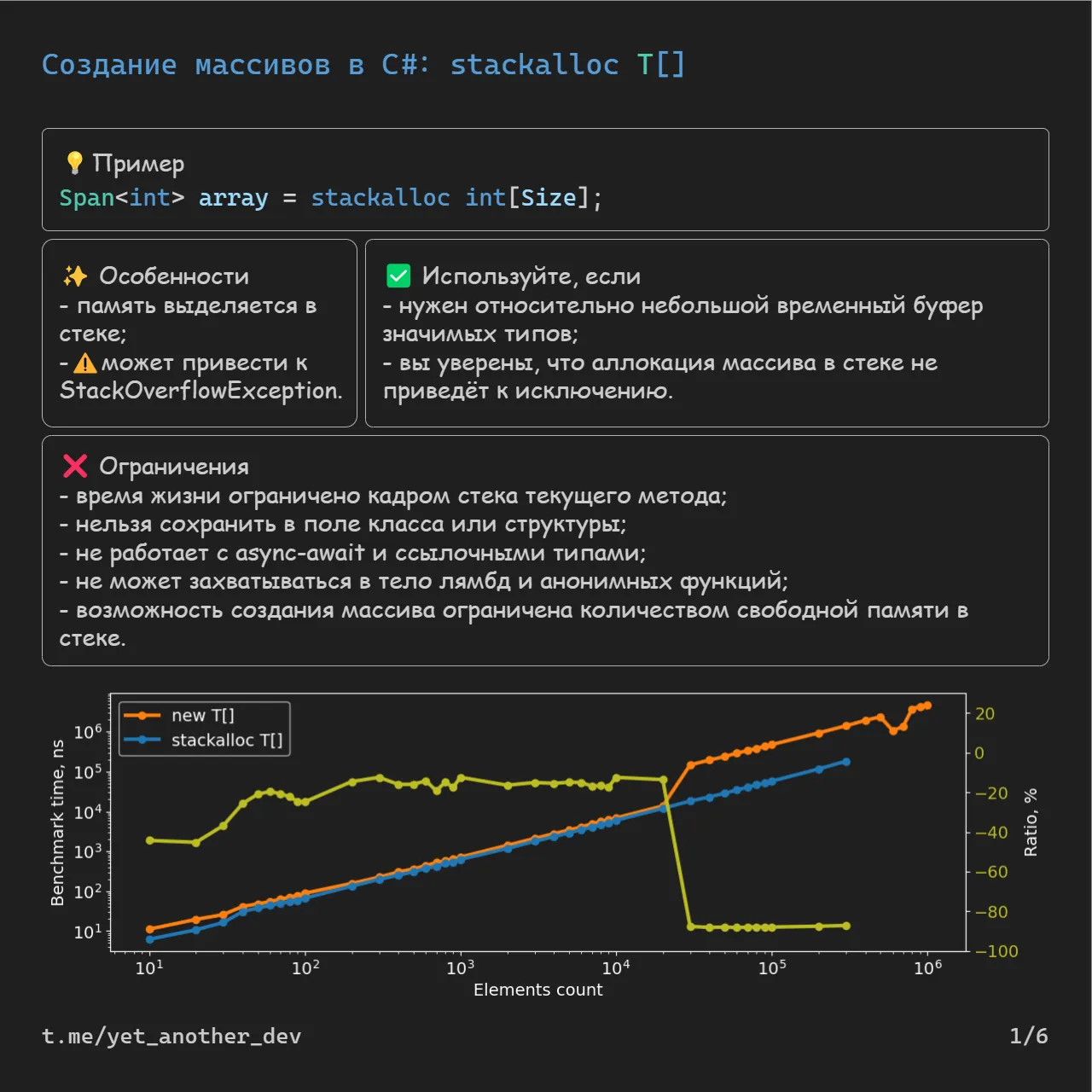
stackalloc vs new T[]: performance on stack vs heap
For small arrays, stackalloc T[] is on average 20% faster than new T[], and up to 88% faster for large arrays. “Small arrays” means arrays smaller than 85,000 bytes (allocated on the Small Object Heap — SOH), “Large arrays” are allocated on the Large Object Heap (LOH).
ArrayPool<T>
ArrayPool<T> returns an array from a shared pool, reducing memory allocations and GC pressure. The returned array may be larger than requested — e.g., a request for 700 elements might return an array of length 1024. This is useful for relatively large temporary arrays that are frequently created and discarded.
ArrayPool<T> is on average 30% faster than new T[] for small arrays and 89% faster for large ones.
However, for arrays smaller than 300–400 bytes, using the pool can be slower.
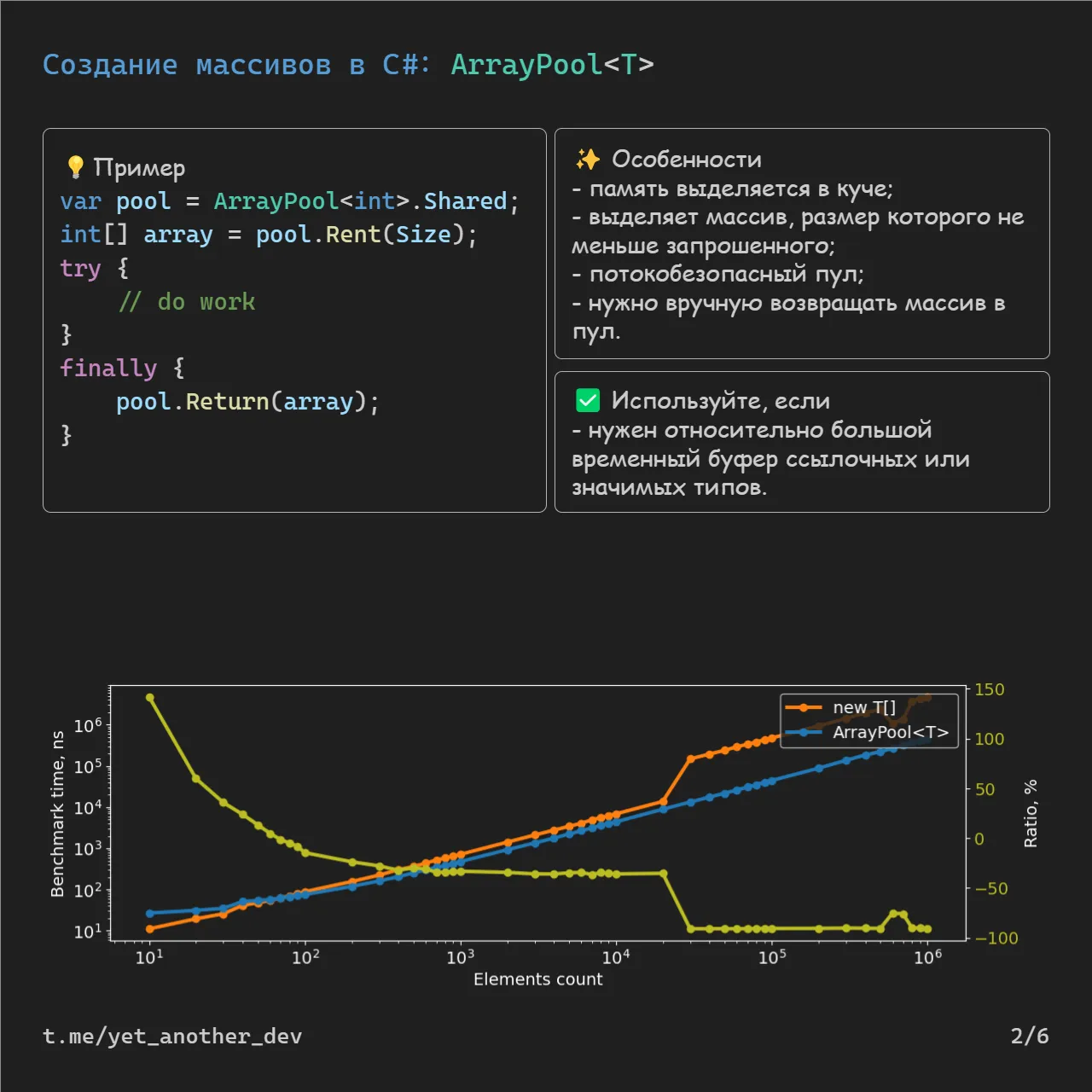
Performance of ArrayPool<T> vs new T[]
GC.AllocateUninitializedArray<T>
This method creates an array without initializing elements to their default values. It can be unsafe since the array contains uninitialized memory. You must overwrite all values before using them.
GC.AllocateUninitializedArray<T> is about 15% faster than new T[] for arrays between 2,048 and 85,000 bytes.
In other cases, performance is similar to new T[].
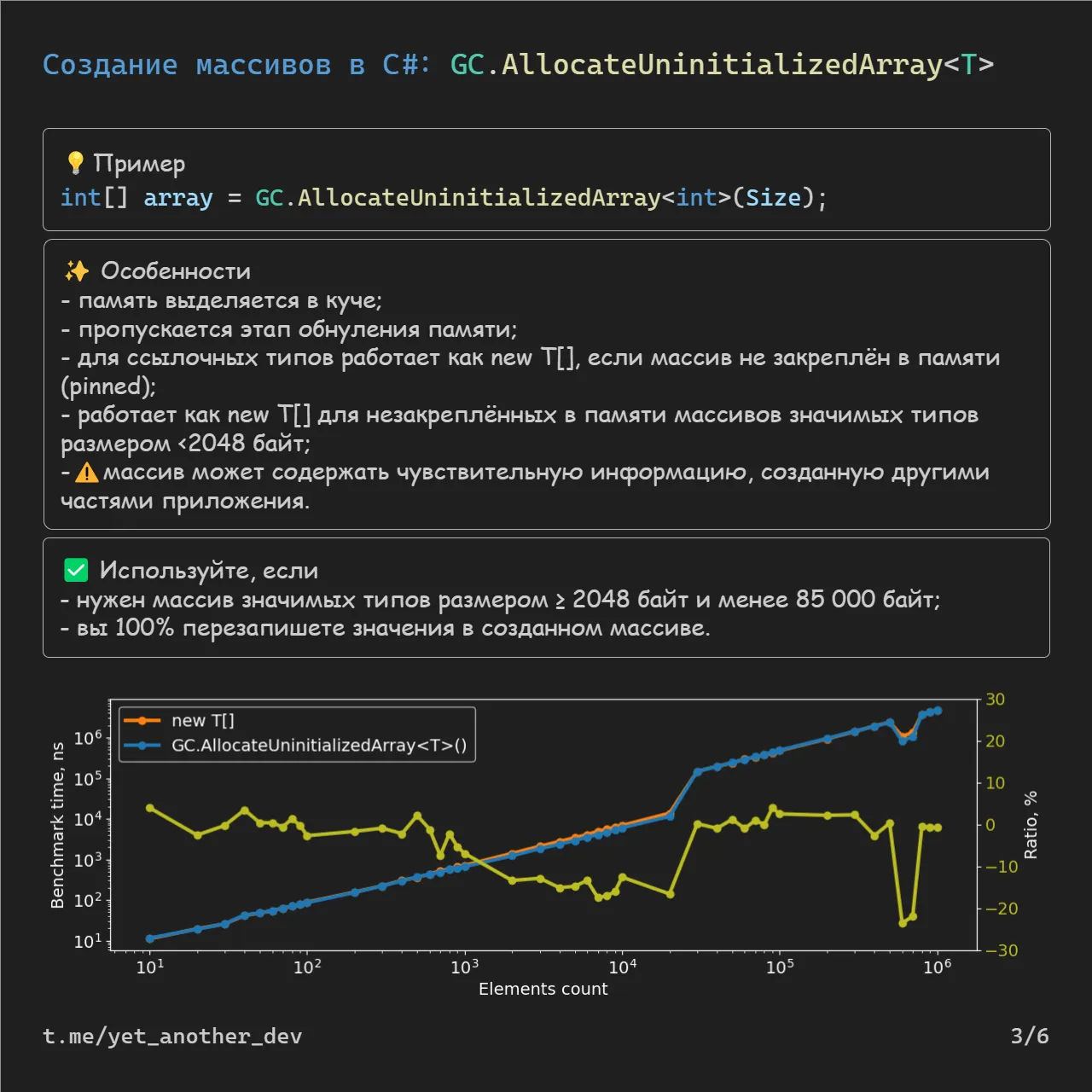
GC.AllocateUninitializedArray<T> vs initialized allocation
Array.CreateInstance
Allows you to create arrays with types known only at runtime. Useful when dealing with dynamically typed code.
Performance is either the same or slightly worse than new T[].
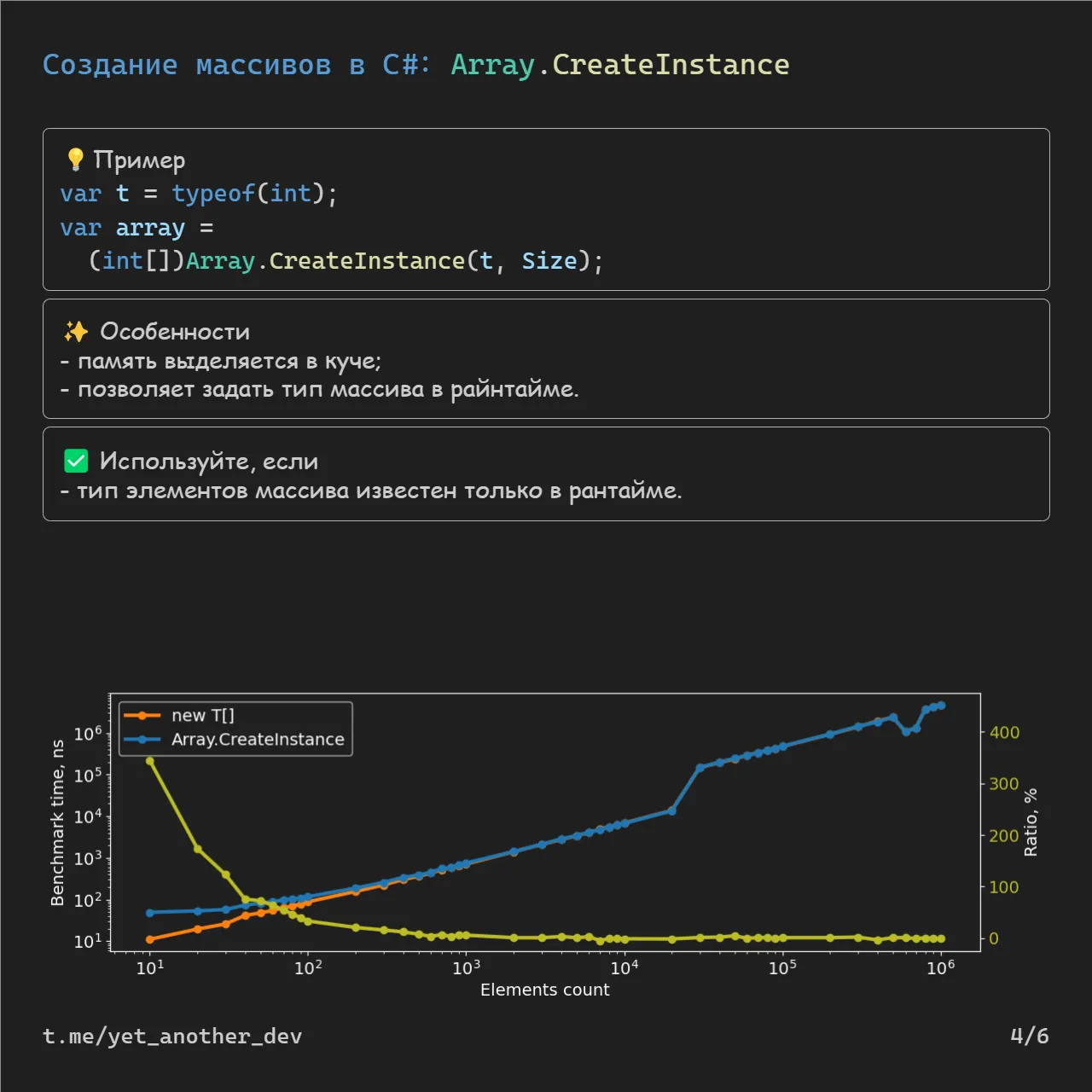
Runtime array creation performance with Array.CreateInstance
InlineArrayAttribute
A relatively new feature introduced in C# 12. It allows you to define a struct with the InlineArray attribute that behaves like a fixed-size array.
On average, it’s 39% faster than new T[] for small arrays and 91% faster for large arrays.
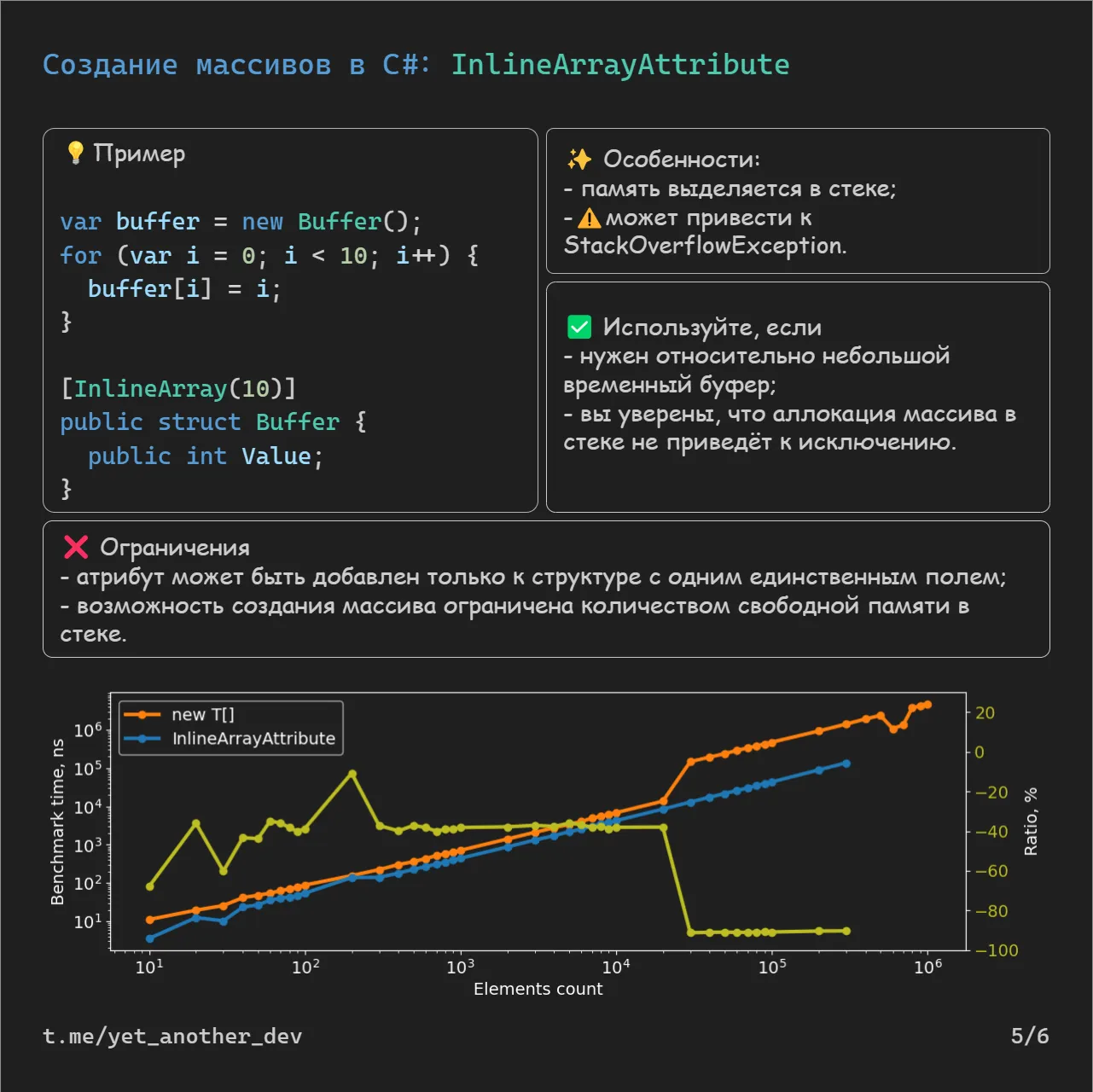
InlineArrayAttribute performance vs traditional allocation
Collection Expressions
Syntactic sugar that lets you define arrays using literals.
For example, int[] array = [1, 2, 3] creates a heap-allocated array (like new T[]),
while Span<int> array = [1, 2, 3] creates a stack-allocated array (like stackalloc).
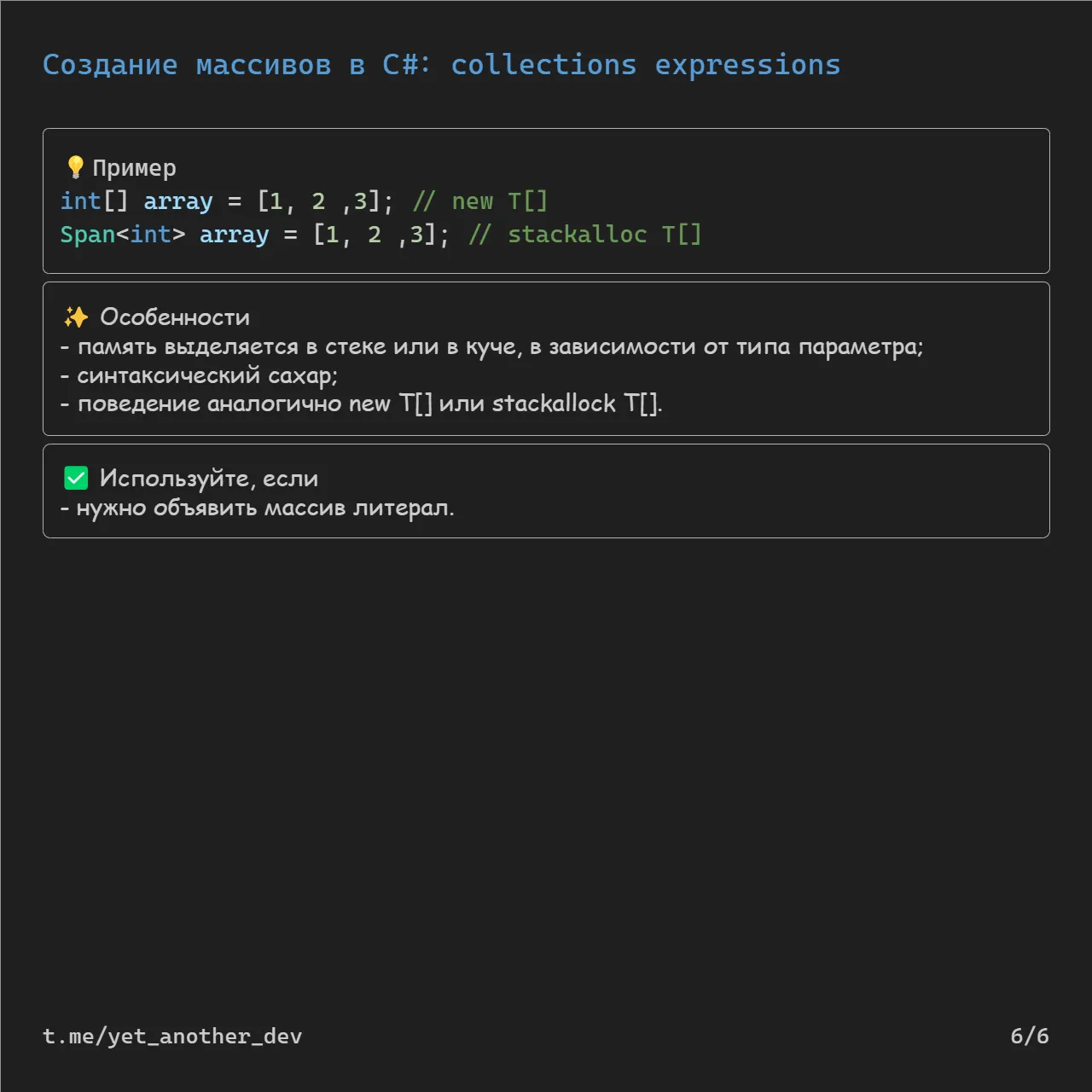
Collection expressions on heap and stack
You can find the benchmark code and full results on GitHub.